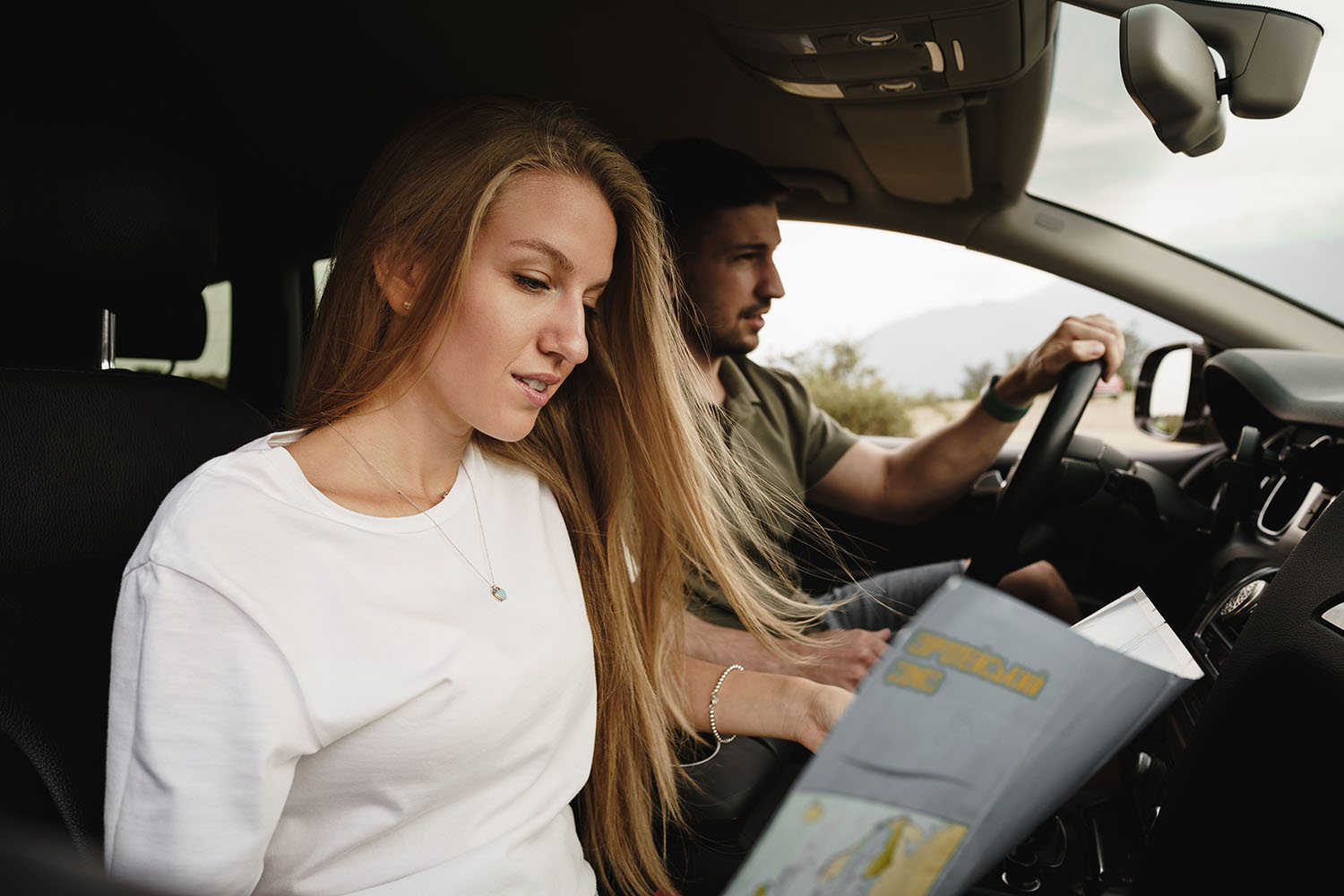Road Trip Prep: What to Do to Avoid a Car Accident While on a Road Trip This Summer

Road trips can be exhilarating adventures for many of us. Just getting away for a weekend can be thrilling! But you may be surprised to learn that road trip accidents are more common than you think. And the best way to protect yourself from a car accident is to follow a few simple tips to minimize risks and ensure a safe journey.
Remember, if you do get into a car accident while on the road, one of your first calls should be to an experienced car accident lawyer from Munley Law. We will help you with your claim and make sure that you are properly compensated for your accident.
Let’s delve into the ways you can make your next road trip not only memorable but also safe.
Understanding the Common Causes of Road Trip Accidents
A summer road trip can be fun and a thrilling adventure. But when a car accident occurs, the results can be troublesome. By understanding the common causes of auto accidents and adopting preventative measures, you can significantly reduce the likelihood of mishaps while on the road.
Fatigue and Drowsiness
One of the most common causes of road trip accidents is driver fatigue. According to the National Highway Traffic Safety Administration (NHTSA), drowsy driving caused an estimated 91,000 motor vehicle crashes in the United States in 2017 alone. Long hours on the road can lead to tiredness and reduced alertness, making it harder for you to react quickly to sudden changes in the road or traffic conditions.
Distracted Driving
Another significant cause of accidents is distracted driving. Distracted driving is defined as any activity that diverts attention from driving. This can include talking or texting on your phone, eating and drinking, or fiddling with the stereo or navigation system. These distractions can take your attention away from driving which increases the chances of an auto accident.
Speeding and Reckless Driving
The latest data from the Insurance Institute for Highway Safety (IIHS) has found that more than 12,000 deaths occurred in speed-related crashes in 2021, accounting for more than a quarter of all traffic fatalities that year. Driving too fast can drastically reduce your ability to steer safely around curves or react to objects in the roadway. By driving at a high speed, you extend the distance necessary to stop a vehicle and can increase the distance a vehicle travels while the driver reacts to a dangerous situation.
Driving While Under the Influence
Driving while under the influence of alcohol or drugs is a serious problem in the United States. The Centers for Disease Control and Prevention found that every day in the U.S. 29 people die in motor vehicle crashes that involve an alcohol-impaired driver. Having a drink or two on vacation may be fun, but any amount of alcohol or drugs that you consume can impact your driving ability, putting you, your passengers, and others on the road at risk.
Poor Vehicle Maintenance
Finally, poor vehicle maintenance can lead to unexpected breakdowns and accidents. A study by the Car Care Council found that poorly maintained vehicles cause thousands of wrecks each year. This includes everything from worn-out brake pads to underinflated tires. Regular vehicle checks and maintenance can help prevent these issues and keep you safe on the road.
Understanding these common causes of road trip accidents is the first step toward prevention.
Preparations for Road Trips
Now that you know what causes most road trip accidents, you may be wondering what can you do to prevent an auto accident while road tripping. Before heading out on your road trip, keep these tips in mind:
Vehicle Maintenance
Before setting off on your road trip, make sure your vehicle is in top shape. Do a thorough check of your vehicle’s tires, lights, windshield wipers, and fluid levels. If your vehicle is due for an oil change or tire rotation, take care of these simple procedures before hitting the road. Make sure the air filters and the car’s brakes are working perfectly and don’t need to be replaced. Remember, a well-maintained vehicle is less likely to result in any car trouble while on the road.
Route Planning
Planning your route in advance can help avoid last-minute surprises and reduce stress during a long road trip. Mapping out your route beforehand, such as using a GPS or even a reliable paper map, can give you a better understanding of where you’re going and what you may be facing along the way. Take into consideration the road conditions, weather, and traffic. It’s also a good idea to have an alternative route planned out, just in case of unexpected road closures or heavy traffic.
Packing Essentials
We’re not talking about what clothes you should pack! Packing the right essentials can make a significant difference in case of emergencies. A basic road trip emergency kit should include items like a first aid kit, a flashlight, jumper cables, a fire extinguisher, a tire gauge, and a spare tire. It may be a good idea to take along extra fluids for your car as well such as motor oil, coolant, windshield washer fluid, power steering fluid, and transaxle fluid. Don’t forget to pack enough water and non-perishable food items, especially for long trips.
Rest Before the Trip
Finally, ensure you’re well-rested before hitting the road. The Sleep Foundation warns that driving after going more than 20 hours without sleep is the equivalent of driving with a blood-alcohol concentration of 0.08% – the U.S. legal limit. A good night’s sleep can help you stay alert and focused, reducing the risk of fatigue-related accidents.
Safe Driving Practices While Road Tripping
By taking the time to prepare for your trip, you can ensure a safer and more enjoyable journey. In the next section, we’ll discuss safe driving practices that can further help prevent road trip accidents.
Seat Belts and Child Safety Seats
First and foremost, always buckle up. The NHTSA states that seat belts reduce serious crash-related injuries and deaths by about half. If you’re traveling with children, ensure they are in the appropriate child safety seats.
Avoiding Distractions
Keep your focus on the road. The National Safety Council reports that cell phone use while driving leads to 1.6 million crashes each year. This includes texting, calling, or using a GPS. If you need to use your phone, pull over safely or ask a passenger to assist you.
Obeying Speed Limits and Traffic Rules
It’s understandable if you want to get to your destination as soon as possible, especially if your final destination is pretty far away. But adhering to speed limits and traffic rules is not only a legal requirement but also a critical safety measure. Remember, the faster you drive, the less time you have to stop if something unexpected happens. So slow down and take your time.
Safe Overtaking and Lane Discipline
When passing another car or truck, do so safely and only when it’s legal and safe to do so. Always pass on the left, never from the right, and return to the right lane only when you can see the front of the passed vehicle in your rearview mirror. Maintaining lane discipline and using signals when changing lanes can also help prevent accidents.
Using Vehicle Safety Features
Modern vehicles come equipped with a variety of safety features, such as anti-lock braking systems, electronic stability control, and advanced driver-assistance systems. The National Transportation Safety Board recommends familiarizing yourself with these features and using them to enhance your safety on the road.
By adopting these safe driving practices, you can significantly reduce the risk of accidents during your road trip.
How to Manage Fatigue and Drowsiness During a Road Trip
Another critical aspect of road trip safety is staying awake and avoiding drive fatigue. This can be difficult, especially if you’re planning a long trip, such as a cross country road trip. But there are some things you can do to prevent getting drowsy while on the road:
- Regular Breaks: Long hours on the road can lead to fatigue, reducing your alertness and reaction time. The National Sleep Foundation recommends taking a rest stop every two hours or every 100 miles. These breaks can also be an opportunity to stretch your legs, hydrate, and have a snack, all of which can help maintain your energy levels.
- Sharing Driving Responsibilities: If you’re traveling with other licensed drivers, consider sharing the driving responsibilities. The American Automobile Association suggests rotating drivers every few hours to prevent fatigue. This allows each driver to rest and recuperate while others take the wheel.
- Recognizing Signs of Fatigue: Being aware of the signs of fatigue can help you take action before it leads to dangerous situations. According to the CDC, signs of fatigue include yawning or blinking frequently, missing your exit, drifting from your lane, or not remembering the last few miles driven. If you notice these signs, it’s time to take a break or switch drivers.
There are several strategies to help stay alert during a long drive. Listening to music or an audiobook, keeping the car cool, taking plenty of rest stops, or even chewing gum all can help maintain your alertness. However, these are not substitutes for adequate rest. If you’re feeling tired, the best solution is to pull over and rest or sleep.
By managing fatigue effectively, you can significantly reduce the risk of drowsy driving and ensure a safer road trip.
Dealing with Impaired Driving
Driving under the influence of alcohol or drugs is not only illegal but also extremely dangerous. Impaired driving can significantly reduce your ability to operate the vehicle safely, increasing the risk of accidents. In addition, the legal implications of impaired driving are severe. The Governors Highway Safety Association notes that penalties can include fines, license suspension, mandatory alcohol education programs, and even imprisonment. Remember, a DUI conviction can have long-lasting effects on your life, including higher insurance rates and potential employment consequences.
By understanding the dangers and consequences of impaired driving, you can make responsible decisions that ensure your safety and the safety of others on the road. In the next section, we’ll discuss how to handle emergency situations during your road trip.
What to Do in a Car Accident While on a Road Trip
Despite your best preparations, you could still face emergency situations on the road. If you’re involved in a car accident, you first want to ensure that everyone is safe from further harm. Call the police immediately after the accident. Exchange information with the other driver(s) but avoid discussing fault. Document the scene with photos if you can do so safely, and speak with the police. Even if you don’t think you’re injured, go to the hospital to get checked out.
It’s also wise to report the accident to your insurance company as soon as possible. It’s also smart to contact an experienced car accident attorney to learn what your options are. If you do get into an accident out of your home state, a personal injury lawyer may be able to help find you an attorney in that state to help you with your case.
Having a list of emergency contacts can be invaluable in a crisis. This should include local emergency services, your roadside assistance provider, and personal emergency contacts. The Federal Emergency Management Agency (FEMA) recommends sharing your travel plans with a trusted friend or family member, so someone knows where you are and when you’re expected to arrive.
By knowing how to handle emergency situations, you can ensure the safety of yourself and your passengers, and potentially reduce the impact of the emergency.
If You Get Into a Car Accident, Our Car Accident Lawyer is Here to Help
Road trips can be an exciting adventure, but safety should always be your top priority. By understanding the common causes of road trip accidents, such as fatigue, distracted driving, and impaired driving, you can take steps to avoid these risks.
Pre-trip preparations, including vehicle maintenance, route planning, packing essentials, and getting a good night’s sleep, can set the stage for a safe journey. While on the road, adopting safe driving practices, such as wearing seat belts, avoiding distractions, obeying speed limits, and using vehicle safety features, can significantly reduce the risk of accidents.
Managing fatigue effectively, through regular breaks and sharing driving responsibilities, is crucial for maintaining alertness and focus. If you’ve consumed alcohol or drugs, finding alternatives to driving can prevent impaired driving and its severe consequences.
Finally, knowing how to handle emergency situations, from vehicle breakdowns to accidents, can ensure your safety and the safety of others on the road. By applying these tips and strategies, you can make your next road trip not only memorable but also safe.
If you do get into a car accident this summer, either far away or just around the corner, Munley Law is here to help. Contact our car accident lawyers today to schedule a free consultation. We are available 24/7. Safe travels!
Posted in Car Accidents.
Tagged Claim Drowsy Driving DUI










